BECOMING
A FAMILY
BECOMING
A FAMILY
Promoting Healthy Attachments
with Your Adopted Child
LARK ESHLEMAN, Ph.D.

Copyright 2003 by Lark Eshleman
First paperback edition 2006
All rights reserved. No part of this book may be reproduced in any form or by any electronic or mechanical means, including information storage and retrieval systems, without written permission from the publisher, except by a reviewer who may quote passages in a review.
Published by Taylor Trade Publishing
An imprint of the Rowman & Littlefield Publishing Group, Inc.
4501 Forbes Boulevard, Suite 200
Lanham, Maryland 20706
Distributed by National Book Network
The hardback edition of this book was previously cataloged by the
Library of Congress as follows:
Eshleman, Lark.
Becoming a family : promoting healthy atttachments wtih your adopted child / Lark Eshleman.
p. cm.
Includes index.
1. Adoption. 2. AdoptionPsychological aspects. I. Title. 3. Bonding and Attachment
HV875 .E84 2003
362.73'4dc21 2003009195
ISBN 978-1-58979-260-9
 The paper used in this publication meets the minimum requirements of American National Standard for Information SciencesPermanence of Paper for Printed Library Materials, ANSI/NISO Z39.481992.
The paper used in this publication meets the minimum requirements of American National Standard for Information SciencesPermanence of Paper for Printed Library Materials, ANSI/NISO Z39.481992.
Manufactured in the United States of America.
DEDICATIONS
First, this book is dedicated to my sons, Christopher Ross and Daniel Leigh. Chris is a strong, loving, intelligent, and creative young man who has taught me the patience and persistence that healthy attachment love requires. Dont worry, ChrisI know I have more to learn. Danny, who died from this life while I was writing the book, was a young man of nature, music, and beautiful spirit, who taught me unconditional love in its most pure form. My life is as rich and fulfilled as it is because of you, My Loves.
Second, this book is dedicated to the two people who, more than anyone, motivated me to put my learning in the field onto the written page. To Bob Patterson, my friend, colleague, and partner, I give my gratitude and love. To Linda Karasch, my friend, mentor, and inspiration, I offer thanks beyond measure.
Furthermore, this book was written in conjunction with, and aided immeasurably by, Wendy Walker. Wendy, it has been a joy and a pleasure to work and learn with you! She dedicates her fine work in this book to her parents, Jack and Connie Walker.
CONTENTS
, by John A. Biever, M.D.
PART II: FOSTERING ATTACHMENT
WHEN YOU WELCOME YOUR NEW CHILD
PART III: COPING WTH
ATTACHMENT DISORDERS
ACKNOWLEDGMENTS
There is no way that this book could have been written without the consistent and enthusiastic writing, organization, and emotional support of Wendy Walker. Her writing skills have been key to making the often difficult concepts and complex problems understandable so they can be avoided or solved. Her thirst to understand what healthy attachment and attachment problems are all about has been crucial in my ability to order my own learning, teachings, and thoughts into what I hope is a practical treatise on how to help adoptive families. Wendy, heres to you and all that you have done to enlighten the lives of countless numbers of deserving, appreciative peopleme among them!
Bruce Mowday completed the critically important job of finding the just right editor and publisher for a book such as this that is written for a particular audience. Thank you, Bruce, for your practical and always calm work in putting me together with Taylor Publishing and introducing me to Wendy.
John Biever, M.D., did what I have trouble doingwriting a concise and accurate history of this field to date. He is a consummate educator, and I am happy he is in the field to help us all learn.
Michael Emmerich, too, my editor at Taylor Publishing, had the grace to tell me when I was too long and when I was too technical and, of course, when I was just right. For his familys own journey, and for guiding me on mine, thanks and very best wishes, Mike!
Lynn Weber, my final light editor, did so much to organize my sometimes scattered thoughts. Lynn, thank you for knowing how to make more clear what Wendy and I were trying to say.
The children with whom I have worked over the years have guided me in learning to understand and help heal their battered, frightened, yet strong and loving souls and minds. Thank you for trusting me to be close to you as we made our journeys together. I especially thank the wisdom and guidance of Elizabeth Goff, M.D., and the Coleman family. However, each and every family has given me inspiration beyond measure! I thank and applaud you all and hold you close in my heart.
The colleagues with whom I work and from whom I continue to learn are too numerous to cite on this page. I refer to some in the book, specifically to those who add to the development of our synergistic trauma and attachment therapy. I need to note specifically Phyllis Booth, Linda Eisele, John Jarvis, Robin Karr-Morse, Vicky Kelly, Jeff Klunk, Vicky Neely, Susan and Siegried Othmer, Linda Shope, Mary Sourber, John Tardibuono, and Martha Welch. Every aspect of my work is profoundly enriched by my colleagues and staff at the Institute for Children and Families, especially Bob Patterson, Kathy Twardowski McBeth, Kathy Caruso, Liz Maxey, Kate Nolt, Ellen Guinan, Carolyn Schleuter, Leslie Higgins, and Toby Spinelli. The Board of ATTACh, also, has been extraordinarily supportive and helpful.
And, of course, family and close friends are the mainstay and inspiration for all of our best work. I give all credit and gratitude to my family from Upstate New York, the entire Eannace-Phillips-Infusino-Cianciolo clan, and my friends and family in Lancaster, Pennsylvania, especially John Eshleman, Tony and Elaine Ugolnik, Jil Trainer, Marge Roy, Mary Steffy, Sue Costley, Harold Wenger, Wendy Wood, Cindy Wubbels, Seburn Fisher, and Rob Gillioand to Bert Patterson for her unwavering, motherly support through my own times of crisis.
PREFACE
This period will be one of the most exhausting, stressful but magical times in your life. Parenting is an art, and we all have to feel our way as we go.... A healthy secure attachment between you and your child will be the foundation of your relationship through the years and be of great benefit to your childs future mental health and happiness.
MOTHER OF TWO GIRLS ADOPTED FROM CHINA
Congratulations! You are among the thousands of Americans and others around the world who are thinking of adopting, perhaps internationally. You may see adoption as an opportunity to make a positive contribution to the world. You may want a child to enter your life so you can love and be loved in this most intimate and giving of ways. You may decide you want to give birth in your family without actually conceiving a child. Whatever your reason for exploring this exciting, life-altering possibility, I hope you will find this book informative, supportive, helpful, and a positive addition to your loving adventure.
Throughout this book you will read about the experiences, positive and negative, that families have had with adoption. The book was originally conceived to be specific to issues of international adoption; you will see special attention in places to this international adoption experience.
However, there quickly seemed enough reasons to expand the scope of the book to include issues relating to both domestic and international adoptions.
Next page

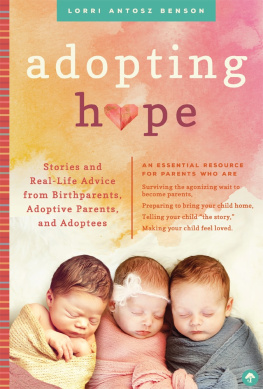
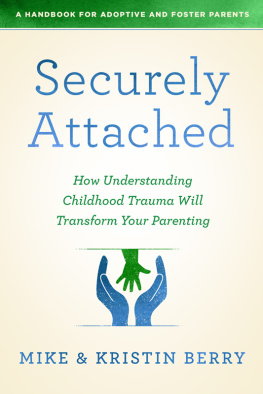
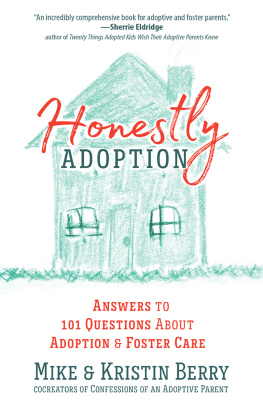

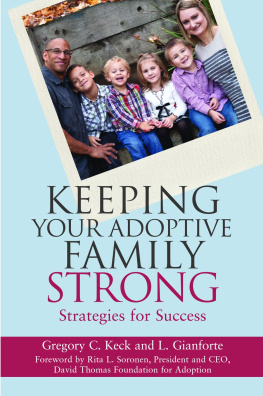
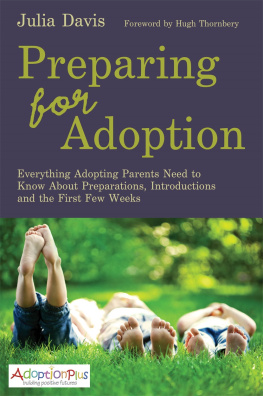

 The paper used in this publication meets the minimum requirements of American National Standard for Information SciencesPermanence of Paper for Printed Library Materials, ANSI/NISO Z39.481992.
The paper used in this publication meets the minimum requirements of American National Standard for Information SciencesPermanence of Paper for Printed Library Materials, ANSI/NISO Z39.481992.